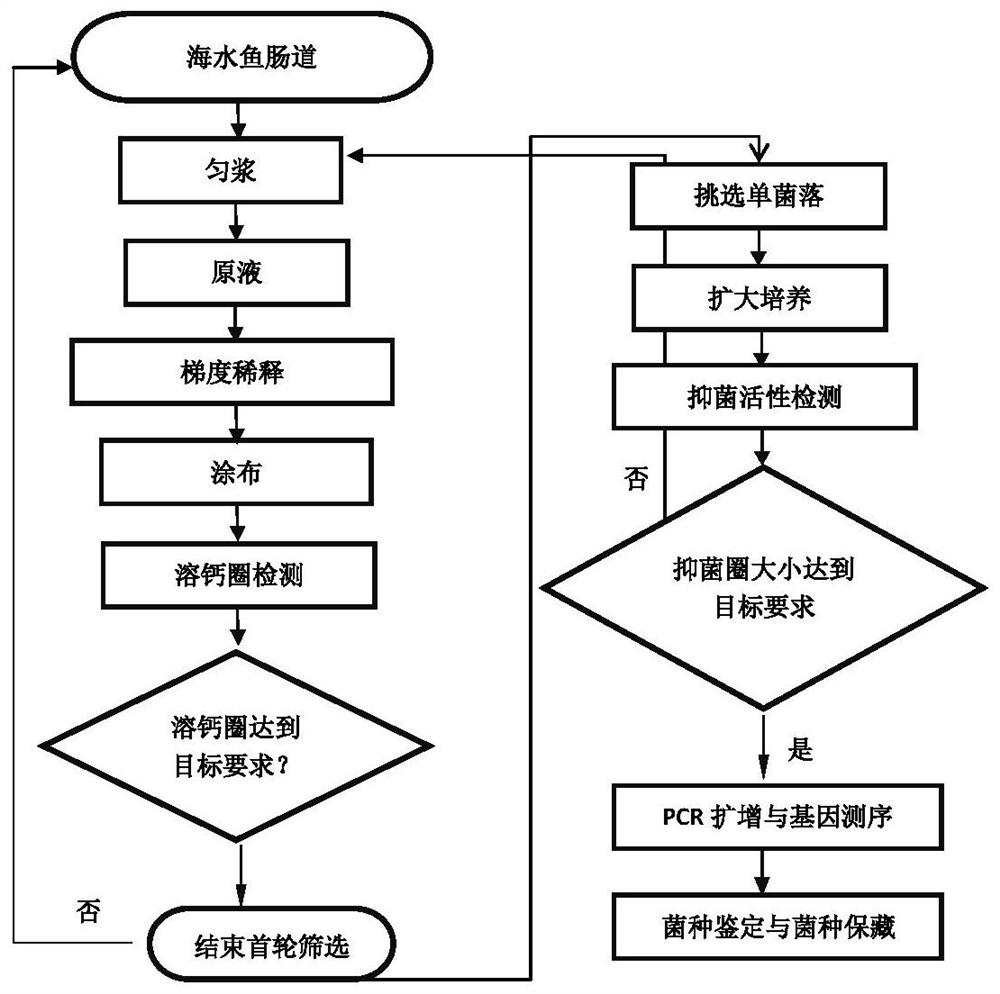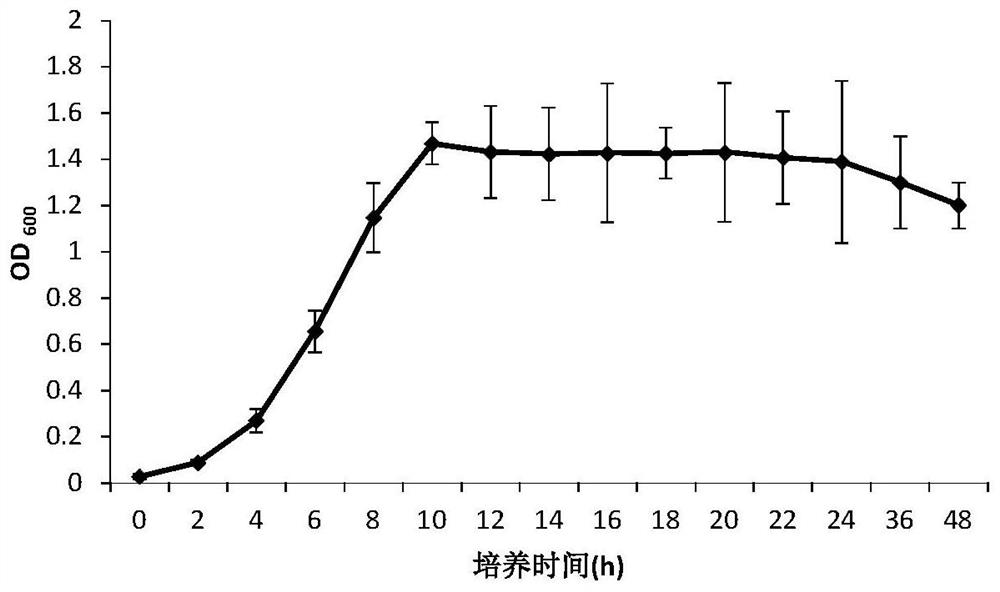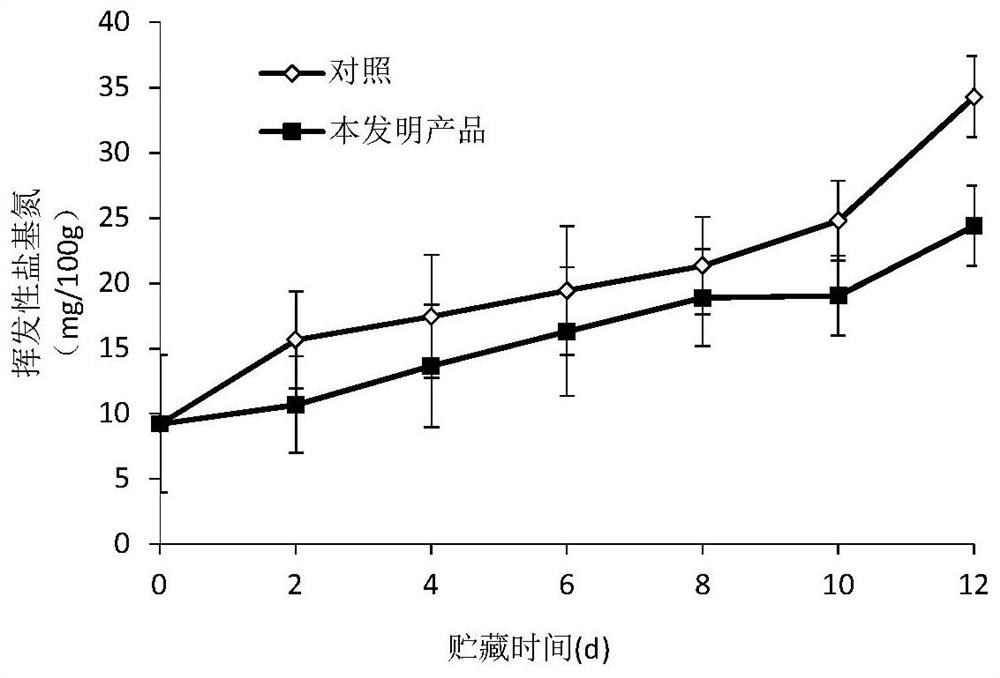Marine lactobacillus plantarum SS-128 and application thereof in aquatic product preservation
A SS-128, marine plant technology, applied in the direction of microorganism-based methods, using chemicals to preserve meat/fish, bacteria, etc., can solve the problems of less preservation of aquatic products, fewer separation reports, limited applications, etc., and achieve antibacterial High antibacterial effect, good antibacterial effect, effect of improving quality and safety
- Summary
- Abstract
- Description
- Claims
- Application Information
AI Technical Summary
Problems solved by technology
Method used
Image
Examples
Embodiment 1
[0021] Example 1 Separation and purification of marine plant lactobacillus Lactobacillus plantarum SS-128
[0022] The isolation of Lactobacillus plantarum SS-128 was carried out according to the separation and purification process ( figure 1 ). The brief steps are as follows:
[0023] Under aseptic conditions, the intestines of the blackhead fish picked were fully shredded with sterile scissors, 10 g was placed in 90 mL sterile saline, and after homogenization, a line was drawn on the MRS medium containing 1% CaCO3, 30 Cultivate at ℃ for 48h. Pick the white colonies with calcium-dissolving circles for further separation and purification, and pick single colonies for Gram staining and catalase experiments. Shewanella, Pseudomonas and Acinetobacter were selected as indicator bacteria, and the antibacterial activity of the isolated strains was preliminarily screened by the Oxford cup method. Take 4mL indicator bacteria solution (concentration is about 1×10 6 -10 7 CFU / mL) ...
Embodiment 2
[0027] Example 2 Physiological and biochemical identification of Lactobacillus plantarum SS-128
[0028] The growth curve of the strain was determined by the optical density method, and the strain with strong antibacterial activity was inoculated in the MRS liquid medium according to the inoculation amount of 1%, and cultured statically at 4°C, with the MRS medium as the blank control, every 3 days Measure once, measure the optical density value (OD600) of the culture solution at 600nm respectively, each group has three parallels, and use the OD value to judge the growth of each strain under low temperature conditions. The results showed that the bacteria grew rapidly at 4°C low temperature ( figure 2 ),
[0029] According to the "Bergey's Bacteria Identification Manual", the strain SS-128 was initially identified. The results showed that the strain SS-128 was rod-shaped and Gram staining was positive. The bacteria could utilize maltose, cellobiose, sucrose, inulin, and lactos...
Embodiment 3
[0032] The bacteriostatic activity of embodiment 3 marine plant Lactobacillus Lactobacillus plantarum SS-128 to Shewanella, Aeromonas
[0033] Pick the colony of Lactobacillus plantarum SS-128 and inoculate it in MRS broth, cultivate it overnight at 30°C, centrifuge and filter at low temperature, and then prepare the supernatant with LB broth to contain 9% Lactobacillus plantarum SS-128 without Culture medium of bacterial supernatant. Activate Shewanella and Aeromonas overnight, culture overnight at 30°C, and inoculate 1% of the overnight culture of Shewanella and Aeromonas into the prepared Lactobacillus SS-128 supernatant After cultured at 30°C for 24 hours, the diameter of the inhibition zone was measured, and the medium with the same pH was used as a control. The results showed that Lactobacillus plantarum SS-128 had strong antibacterial activity against aquatic product spoilage bacteria Shewanella and Aeromonas. The diameters of the inhibition zones of the two bacteria ...
PUM
 Login to View More
Login to View More Abstract
Description
Claims
Application Information
 Login to View More
Login to View More - R&D
- Intellectual Property
- Life Sciences
- Materials
- Tech Scout
- Unparalleled Data Quality
- Higher Quality Content
- 60% Fewer Hallucinations
Browse by: Latest US Patents, China's latest patents, Technical Efficacy Thesaurus, Application Domain, Technology Topic, Popular Technical Reports.
© 2025 PatSnap. All rights reserved.Legal|Privacy policy|Modern Slavery Act Transparency Statement|Sitemap|About US| Contact US: help@patsnap.com



